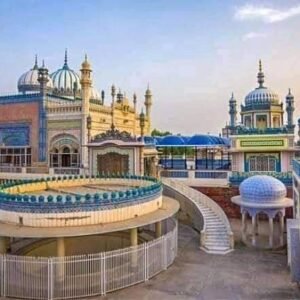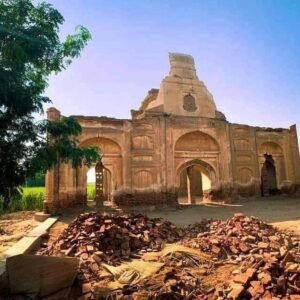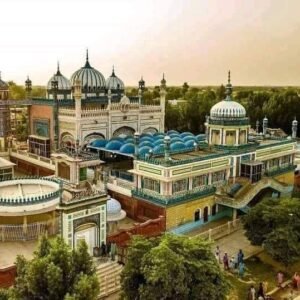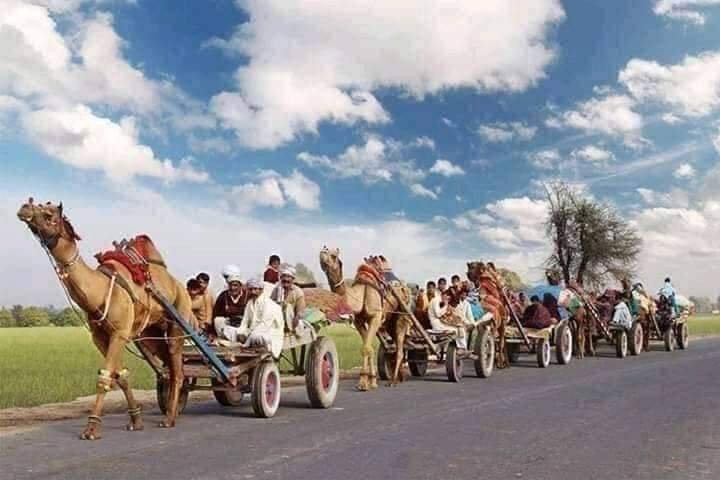

 Home to diverse ethnic and cultural groups, Rahim Yar Khan is the fifth largest district of Punjab with a population of over 55 lakhs. It is an excellent example of historical status and a testimony, often referred to as the Gateway of Punjab. Since its inception, Rahim Yar Khan has stood as one of the few historical cities in the world, witnessing the passage of time and the influences of civilizations,
Home to diverse ethnic and cultural groups, Rahim Yar Khan is the fifth largest district of Punjab with a population of over 55 lakhs. It is an excellent example of historical status and a testimony, often referred to as the Gateway of Punjab. Since its inception, Rahim Yar Khan has stood as one of the few historical cities in the world, witnessing the passage of time and the influences of civilizations, 

Rahim Yar Khan
The fifth largest district of Punjab with a population of over 55 lakhs
- Cotton Juicy Mango, Khanpuri Pede Kajoor and Bhong Masjid. Castles. And spiritual centers are the hallmarks of this region.
A district that is not only known for its fertility and tradition.
Rather, this district is also called the “Gateway of Punjab” as an excellent example of historical status and a testimony.
, because not only it is located at the junction of Punjab, Sindh and Balochistan.
Rather, all main routes to Punjab and Khyber Pakhtunkhwa pass through here.
It includes four Tehsils Khanpur, Liaquatpur, Rahimyar Khan and Sadiqabad. Sadiqabad city is within the Ghotki district of Sindh province, it is surrounded by Sindh on all three sides.Its old name was “#Nowshehra” which was later renamed as “Rahim Yar Khan” after the son of Nawab of Bahawalpur.
Rahim Yar Khan is one of the few historical cities in the world that have remained in place since its inception.
The city was called by many names in different periods including Alwar, Patan, Phulvada and Nowshera.
The reason for the present name of Rahim Yar Khan is that in 1881 when the state’s ammunition depot caught fire, the prince of the state “Rahim Yar Khan” was killed in the accident after which the city was named.
It is said that around 328 BC, the caravan of Alexander the Great also passed through here on his way to Iraq.
800 years ago, when Muhammad Bin Qasim and his forces passed through the same route to conquer Multan, it is said that the palm trees in this area grew because of Muhammad Bin Qasim’s army, because they used to eat dates and press their knees in the same ground.
Due to which dates were produced here, very good types of dates are produced here, the demand of which is very high throughout the country, among them Jaja Abbasian dates are the top.
After Muhammad bin Qasim, Shahabuddin Ghori conquered Multan and the capital of Sindh, Uch, and founded the Islamic state here.Then, during the reign of Sultan Shamsuddin Al-Tamish, this area remained the center of rebel groups for nearly 20 years. According to researchers, before Ghori, Sultan Mahmud of Ghaznavi passed through this area on his way to Somnath. After the Ghaznavid period, this region passed through the reign of various princes, and in 1578, the Ghori sultans of Delhi conquered this region, who defeated the Mughals and became the rulers of this region.On the other hand, Amir Sultan Ahmad Abbasi who came from Egypt and settled in Sindh in 1366 with thousands of his followers, one of whose elders, Abd al-Abbas, was recognized by Ghiyasuddin Muhammad bin Tughlaq as his spiritual leader.
Over time, the Abbasid dynasty continued to move northward and finally after a war with the ruler of Jaisalmer, the “Fort of Derawar” was conquered. And the Abbasid family settled here permanently.The southern part consists of the desert which stretches up to the India-Pakistan border and constitutes a quarter of the entire area. It is also called Cholistan and Rohi. That Cholistan was not always a desert. About 1000 years ago it used to be a lush green area irrigated by the ancient “River Hakra”. which was a tributary of river Sutlej and Saraswati. Then gradually it disappeared and now only traces of it are left, on rainy days it starts flowing here and thereThe climate of the district is hot humid.
Summers are longer than winters. At night, however, the weather becomes pleasant. The average annual rainfall is 100 mm.Rahim Yar Khan still produces high quality mangoes across the country.After mango, the famous fruit here is date. After Muzaffargarh, Rahim Yar Khan produces the largest number of dates in Punjab, accounting for 34% of the total production of Punjab.The Bhong Masjid here is of international fameThe land of Sufis and the ancient city of Tehsil Khanpur, perhaps the only Tehsil in Punjab that used to be a district, After ending it in 1932, Rahim Yar Khan was made a district of Chachadan Sharif, which was the abode of the famous Sufi sage and poet Hazrat Khawaja Ghulam Farid.The city’s fame throughout the country is due to the “Khanpuri trees”, the famous souvenirs of Rahim Yar Khan district.
Since there are about 8 cities named Khanpur in Pakistan, therefore Khanpur Tehsil is also called Khanpur Katura. There are two reasons for this, one is that the structure of this city is like a bowl and the other is that at one time the brass bowls here were very famous.Before Partition, when Mohandas Gandhi passed through the city, the local Hindu traders presented him with brass bowls.In the north of the city, the town of Chachadan Sharif on the banks of the Indus River and in the south of the Cholistan sand fort “Islamgarh” and “Khairgarh Fort” are related to visit.The last tehsil of the district is Liaqatpur, which is located near the historical place “Uch Sharif” of Bahawalpur district. While another location, Head Panjand is also next to this city Liaquatpur is a small city named after Liaquat Ali Khan, the first Prime Minister of Pakistan Among the famous people here is Hazrat Khwaja Ghulam Farid, a famous Sufi sage and poet Remember that the Sheikhs of Abu Dhabi have also done a lot of work here,



